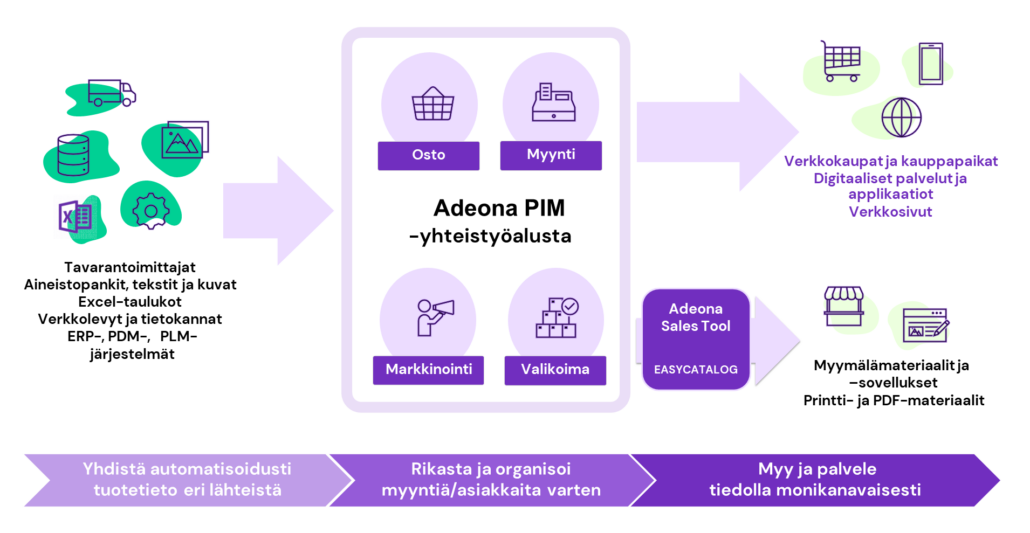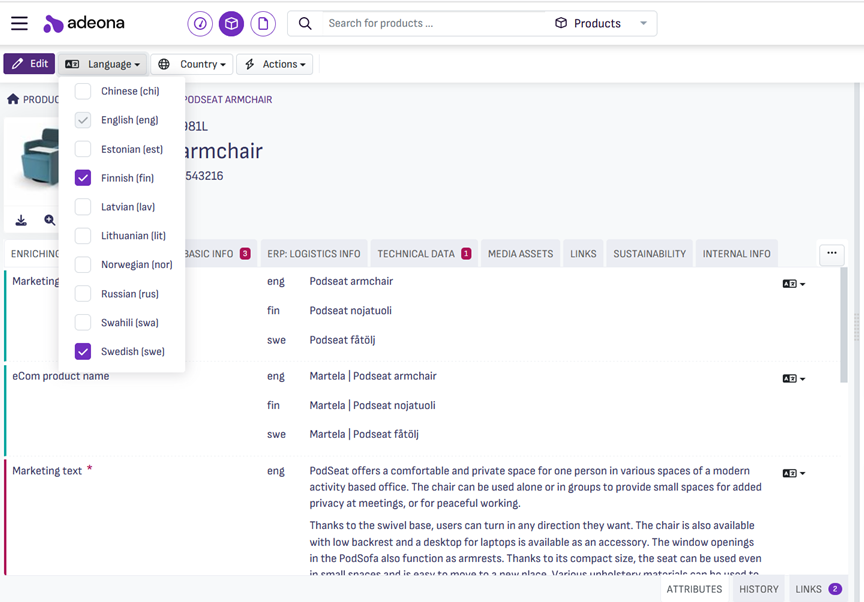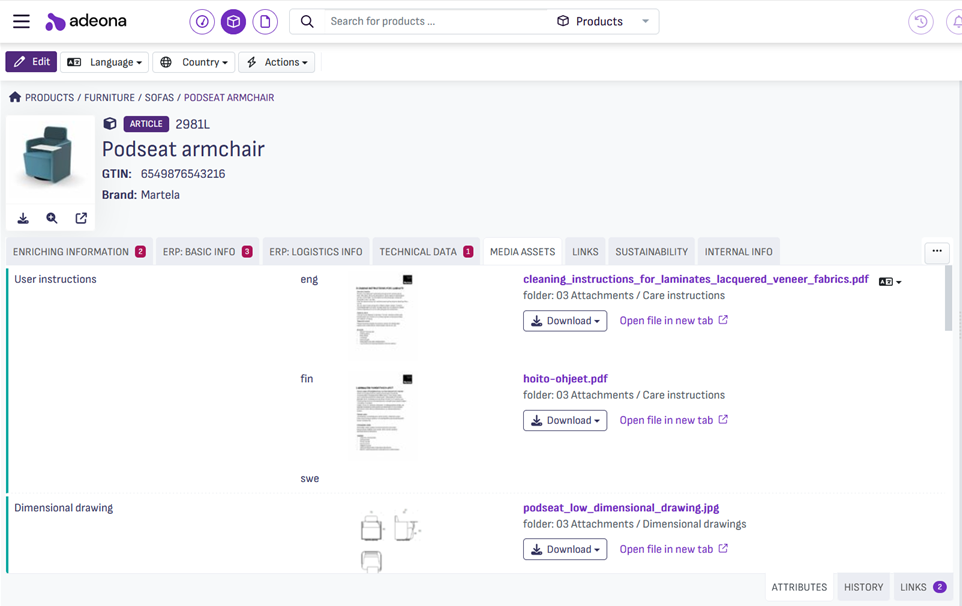The competition on the international market is fierce and many Finnish companies also want to join the race. In this blog, we offer some tips to successfully localize product sales.
Challenges of multilingual product marketing
There are quite a few typical pain points in the localization of product sales. When making offers, sellers spend a lot of time hunting for product information from different sources. Basic information is usually easy to find, but technical specifications must be asked from product development, suitability must be checked, pictures must be requested from marketing and prices must be checked. In addition, country-specific differences in the availability of information can be enormous. For example, countries where product development works usually have much more information than countries where there are only sales offices. Collecting information for offers wastes a lot of good sales time.
In marketing, managing translations is sometimes challenging. Very often, translation excels are sent to each country, and you can never be sure what information has been translated and what has not. Multichannel content management in general is challenging. The information must be updated for each sales channel. Since updates to different channels are often handled by different people, it cannot be certain whether the information on the website is the same as in the brochures or offers.
Companies wrestle with these situations, and the fact that the pace of change is accelerating all the time does not make managing the whole any easier. Information changes, more channels and languages are added, local requirements and regulations increase. However, you have to stay involved in order to succeed in the competition.

The centralized product information management or PIM system functions as an internal product information bank. There you can manage translations centrally and from there the information is automatically updated to the sales channels where the information is needed.
Centralized product information management PIM is the company's internal collaboration platform, where information is collected from wherever it is found, enriched and organized to better meet customer needs, and automatically published to serve customers in different sales channels. When the information is exported once to the PIM system, it is automatically displayed correctly in all online services, applications, stores and materials.
How PIM can be used in localization
Below you can see a picture Adeona PIMfrom the user interface of the system. Data to be localized in the PIM system can be imported in several different ways:
- Translations can be made directly in the user interface
- They can be loaded into PIM from Excel
- They can be imported there automatically from other systems or databases

If necessary, PIM can also be connected to external translation services:
- From PIM, you can request translations as machine translations, either from free, open services or from a translation partner's service
- Translations can also be requested from the translation partner's translation service, which is based on the company's own term bank
- PIM can be integrated into the translation partner's customer portal, from which even the most demanding translation jobs can be ordered directly into PIM
In the PIM system, it is easy to view versions of product information in different languages side by side. At the same time, you can monitor the degree of enrichment of mandatory contents: what information is found and what is missing.
Missing data can be filtered to different table views. In the image below, for example, the products of a certain product manager have been filtered, which lack Finnish and English marketing texts. This makes it easy for the product manager in question to start filling in the missing information.

In the same way, country-specific differences can be managed in the PIM system. For example, Avainlippu is required in the Finnish market, and the Swedish market may have its own statutory brand requirements. The following picture shows an example of the language versions of the operating instructions.

An example of product sales localization
Finally, one practical example from the world: the company is a paint manufacturer whose products are sold in many different countries. Paints are products that have different regulatory requirements in different countries. Therefore, it is important that all country-specific product information is always correct wherever it is displayed. The jar sold in Germany must have certain symbols on the label, and the one sold in England others.
This paint manufacturer has centralized product information management, from which the information is published on every label, marketing material and price list - this way you can always be sure that the information is correct and up-to-date.
This company has taken data utilization to the next level. They make customer-specific materials using centrally managed data. Catalogs for consumers and professionals are different. Contract customers' catalogs only contain their own products. Even the labels are partly made according to the customer. All this is possible when product information and their localizations have been managed centrally.







